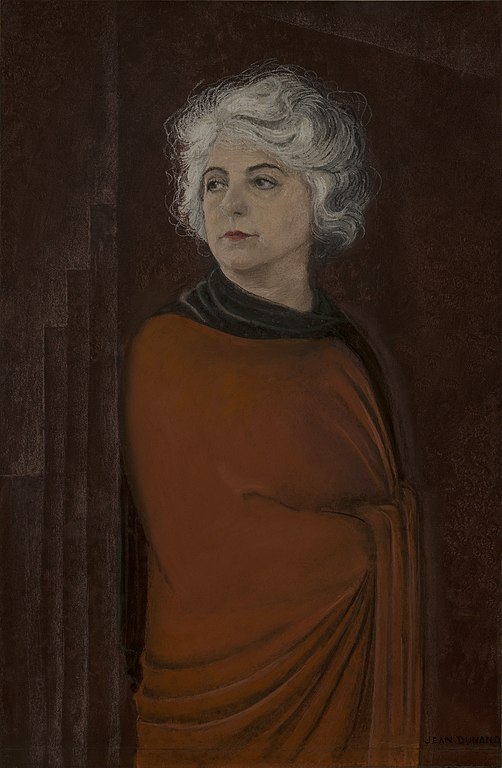Reimagining Elegance: The Influence of Madeleine Vionnet and Hollywood Glamour on 1930s Fashion Trends
Introduction to 1930s Fashion
In the 1930s, women’s fashion underwent a significant transformation, shifting from the restrictive tubular silhouette of the 1920s to a celebration of the female form. This marked a pivotal moment in fashion history, symbolizing the resilience and adaptability of women. Designers like Madeleine Vionnet led this revolution, introducing bias-cut dresses that not only embraced but also accentuated women’s natural curves. These dresses, including Vionnet’s iconic designs, became a symbol of feminine elegance, showcasing French designers’ craftsmanship and women’s empowerment in the era.
Transition to a New Era
The 1930s witnessed a significant departure from the previous tubular fashion trend, focusing on celebrating the natural curvature of the female body. This shift was captured in Vogue’s feature ‘The Figure Then the Frock’ in its April 15, 1931 edition, highlighting the era’s fashion evolution and style trends, with Madeleine Vionnet’s designs leading the way.
Influence of Vionnet
Madeleine Vionnet played a pivotal role in this fashion revolution with her innovative bias-cut gown designs that wrapped and clung to the female form. Her couture dresses, which draped at the angle of the textile’s weave, were embraced by other major Parisian fashion houses of the time, including Chanel, Schiaparelli, Lanvin, and Mainbocher, marking a significant moment in art deco fashion and vintage couture.

Madam Vionet
Credit: Berko gallery, CC BY-SA 4.0 <https://creativecommons.org/licenses/by-sa/4.0>, via Wikimedia Commons
Neoclassical Influence
The 1930s embraced a neoclassical aesthetic, a significant cultural and artistic movement that drew inspiration from ancient Greece. This led to the emergence of the goddess-like female figure in fashion, a symbol of beauty and power. The era, epitomized by the likes of Jean Harlow, Claudette Colbert, and Joan Crawford in cinema, showcased Grecian-inspired designs and old Hollywood glamour. Madeleine Vionnet’s influence was evident in the femme fatales of the time, adding a layer of depth and richness to the fashion of the era.
Escapist Arts in a Turbulent Era
Amidst economic depression and the looming Second World War, the escapist arts of the 1930s were fueled by the democratic ideals of ancient Greece. This influence was not only evident in fashion photography, with popular scenes featuring women in draped white gowns standing by Ionic columns, but also showcased the enduring appeal of Grecian-inspired evening gowns.
Revolution in Fashion Photography
The 1930s witnessed significant advancements in fashion photography, exemplified by Vogue’s first-ever photographed cover featuring a sporty image of a bathing beauty in a red suit. This marked a departure from the traditional draped gown imagery, positioning the cover girl as a Greek icon, a testament to the evolving 1930s fashion and Madeleine Vionnet’s lasting impact.
1930s Fashion Trends
The 1930s introduced several notable fashion trends for women, including:
- The Bias Cut: Dresses were crafted to skim the body, following the angle of the textile’s weave, resulting in a curve-hugging yet fluid look that became synonymous with couture and silk dresses of the era. Madeleine Vionnet popularized this technique, which showcased the art of fabric draping in a new light.
- Vionnet’s Influence: Madeleine Vionnet’s designs set the tone for the era, inspiring other major fashion houses to adopt the columnar and curve-hugging aesthetic. Her influence on French fashion was profound, cementing her status among the most revered couturiers of the 20th century.
- Embracing the Female Form: This era marked a departure from the previous tubular trend, embracing and celebrating the natural curves of women’s bodies. Madeleine Vionnet’s fashion evolution and iconic designs heralded a new era in 1930s fashion.

dress by Vionnet, 1932–34
credit: Museo del Traje, CC BY-SA 4.0 https://creativecommons.org/licenses/by-sa/4.0, via Wikimedia Commons

Image credit: Photographer for the Rhode Island School of Design Museum of Art, CC0, via Wikimedia Commons
Backless Silhouettes and Bare Backs
In the 1930s, backless dresses became a hallmark of 1930s fashion, introducing a new chapter in couture history. Designers, including the legendary Madeleine Vionnet, turned their attention to the allure of the female back, with hemlines gracefully sweeping the floor. Vogue highlighted the essential undergarments that complemented these open-back designs, spurring undergarment makers to innovate suitable foundational garments.

Pants as a Fashion Statement
The 1930s also saw the rise of pants as a chic option for women, especially for sports and leisure activities, marking a pivotal moment in 1930s fashion. In various settings, Vogue discussed the appropriateness of slacks, shorts, and culottes. While couture pajama sets and linen plus fours were lauded for their elegance, wearing pants to an upscale cafe on the Upper East Side was still hesitant. Designers like Maggy Rouff and Elsa Schiaparelli embraced pants, offering fashionable interpretations that challenged traditional norms.
Fashion Influence of Hollywood
During this era, Hollywood solidified its status as a major fashion influencer, with MGM costume designer Gilbert Adrian at the forefront of this movement. Hollywood’s leading ladies were adorned in custom fashions, setting trends that resonated with fashion icons globally. Vogue magazine’s article ‘Does Hollywood Create?’ in its February 1, 1933, issue explored Hollywood’s burgeoning influence on fashion, showcasing iconic costumes worn by stars such as Greta Garbo, Marlene Dietrich, and Joan Crawford, thereby highlighting Hollywood fashion’s impact.
Technological Advancements in Fashion
The 1930s were also a time of technological innovation in fashion, with the introduction of rayon, a cellulose-based fiber, into the fashion industry. This period saw the creation of silk-alternative crepe de chines in day dresses, showcasing the era’s embrace of new materials. Additionally, nylon emerged as a popular alternative for silk stockings, reflecting the decade’s openness to technological advancements in fashion.
The Impact of Zippers and Surrealism in 1930s Fashion
In the 1930s, the fashion industry witnessed the innovative introduction of zippers into high fashion, a collaboration between Lightning Zips and Schiaparelli that highlighted the zipper’s sleek and efficient fastening capabilities in Schiaparelli’s 1935 autumn/winter collection, marking a notable moment in 1930s fashion.
Surrealism in Fashion
This era also saw surrealism making a profound impact on fashion. With his otherworldly art, Salvador Dal contributed surreal covers and fashion illustrations to Vogue, while Elsa Schiaparelli’s collaboration with Dal led to the iconic trompe l’oeil Tears dress pattern in 1938. This period was rich in artistic collaboration, drawing mainstream attention to surreal and Art Deco fashion influences.
Top Designers of the Era
The 1930s were defined by the contributions of influential fashion designers such as Madeleine Vionnet, Elsa Schiaparelli, and Coco Chanel. These couturiers and French designers played a crucial role in shaping the fashion landscape, introducing innovative designs that have left a lasting legacy on the world of couture.

Expo-Elsa Schiaparelli (Exposition Shocking ! Les mondes surréalistes d’Elsa Schiaparelli du 6 juillet 2022 au 22 janvier 2023 musée des Arts décoratifs, Paris)
Credit: Arroser, CC0, via Wikimedia Commons

Illustration showing three women in day outfits by “Gabrielle Channel” (sic) consisting of belted tunic jackets and full jersey skirts for March, 1917
Men’s Fashion Trends
Men’s fashion in the 1930s drew inspiration from film icons like Clark Gable and Cary Grant, who epitomized the era’s style with their distinctive looks. The era’s fashion was characterized by Savile Row’s tailored suits, which featured slimmed-down silhouettes and semi-accentuated waists, mirroring the transformative shift in women’s fashion.
Cultural Landscape
The 1930s were marked by significant cultural events that influenced society and fashion, including the stock market crash in 1929, the Great Depression, and the end of Prohibition in 1933. The film industry offered an escape, with stars like Shirley Temple and Fred Astaire captivating audiences and setting trends. Edward VIII’s abdication in 1936 to marry Wallis Simpson also captured the public’s attention, cementing their status as fashion icons amid the backdrop of old Hollywood glamour.

King Edward VIII and Mrs Simpson on holiday in Yugoslavia, 1936
National Media Museum from UK, No restrictions, via Wikimedia Commons
Overall, the 1930s were a transformative period in women’s fashion, characterized by a shift towards designs that celebrated and accentuated the female form. Madeleine Vionnet’s innovative designs significantly influenced this era’s fashion evolution and style trends, marking a lasting impact on the fashion industry. This period witnessed groundbreaking innovations in women’s fashion, from embracing backless silhouettes and accepting pants as fashionable attire to Hollywood’s influence on fashion trends and integrating new technologies in fabric production. These developments marked a significant evolution in fashion, with designers like Vionnet leading the way.
Source:
Lilah Ramzi (April 5, 2024). A 1930s Fashion History Lesson: Goddess Gowns, Surrealism, and More Trends of the Escapist Era. Vogue. https://www.vogue.com/article/1930s-fashion-history-lesson. Accessed April 9, 2024
Other posts you might like:
The Brandy Melville Brand and Its Controversies
